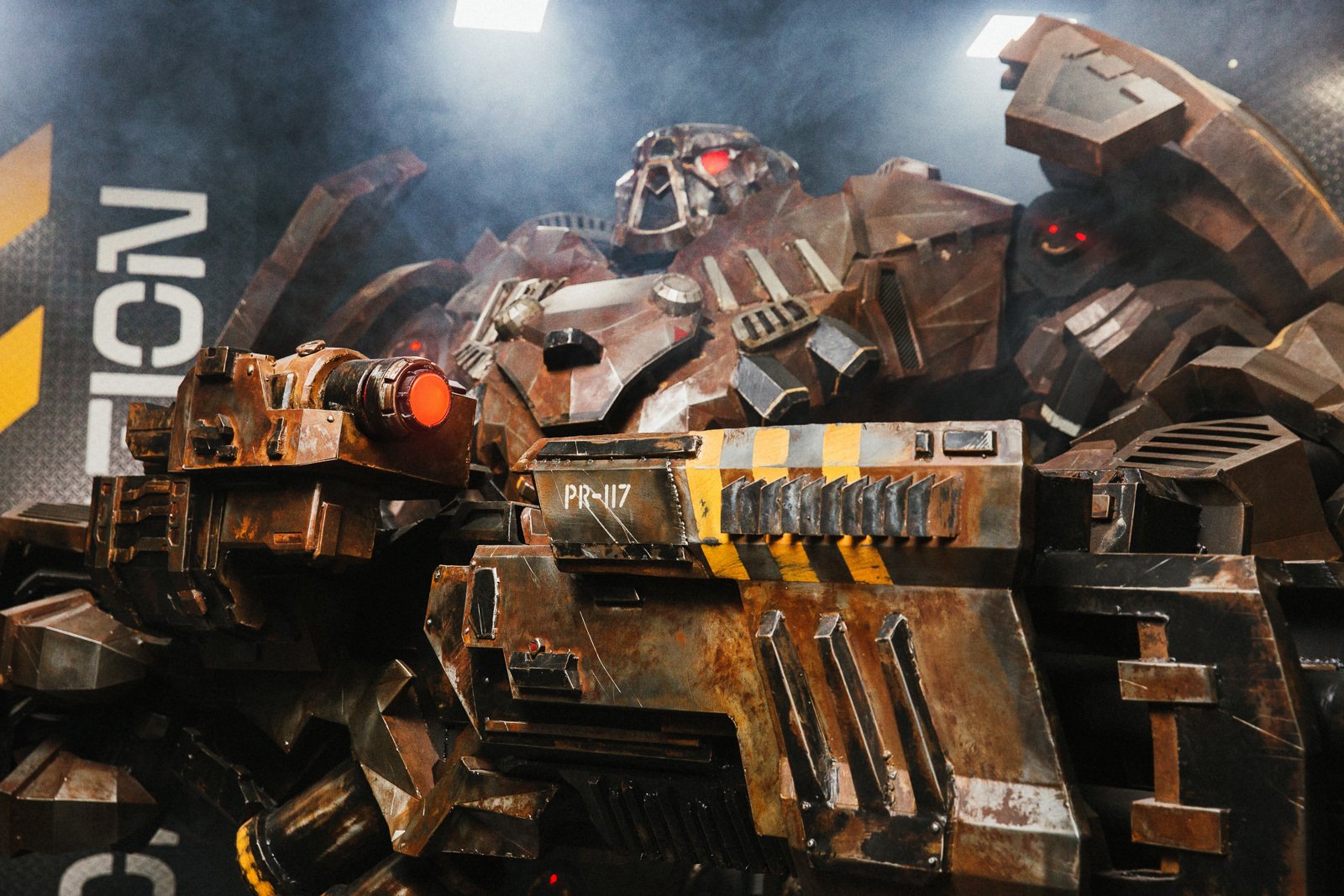
3D The robot model was created 5 years ago. There are 180 thousand polygons, 440 elements and 5 basic textural sheets of 4K each. But now before you is no longer a 3D model, but a real 3-meter 800-kilogram giant made of flesh and blood. More precisely, from metal and metal.
“Hammer” made Sasha, Andrew and Sergei – blacksmiths with experience. They say that their forge has become something like an art studio. We publish the story of the guys about how the robot “Hammer” was born.
How to start the creation of the robot
We mainly work on exclusive orders – we take up what we are interested in and constantly raise the bar of complexity.
We find something that no one else has done. Then we find out what is the main hitch, and we start to work. Sergey created the most complicated Gothic armor. And for Euro 2012 on one of the Kharkov avenues we installed our 4-meter sculpture of a woman. Once we did the figure of a horse, half of which was forged in a realistic manner, and the other half in steampunk style. Most often it turns out that the difficulties that others have receded can be overcome – there would be a desire.
We started cooperation with the company Plarium with a small trial task – first-aid kits from Half-Life. Now it hangs in the parking lot of Plarium Kharkiv. And then the guys sent a 3D model, screenshots and a video clip with a robot.
We did not have the necessary experience, but we knew that we would get it in the process. In total, over the “Hammer” we worked for 2 years, but now we would have done a similar project for 6 months.
How we prepared the materials
First, we used the old approach – printed pictures, moved the dimensions to sheets of paper and started cutting the metal with a Bulgarian. The creation of one foot took several weeks and much more material than we expected. We had to look for alternatives.
We remembered that there are programs that decompose the models into a sweep, from which the papercraft is then created. They decided to try the same thing with metal.
In 3ds Max, the robot was dismantled for parts, and in Pepacura they did a 3D model scan. Then began to prepare materials for laser cutting and master SolidWorks. In order to create the necessary number of parts, it was necessary to make 1.5 kilometers of cuts on steel 26 mm sheets measuring 1×2 meters.
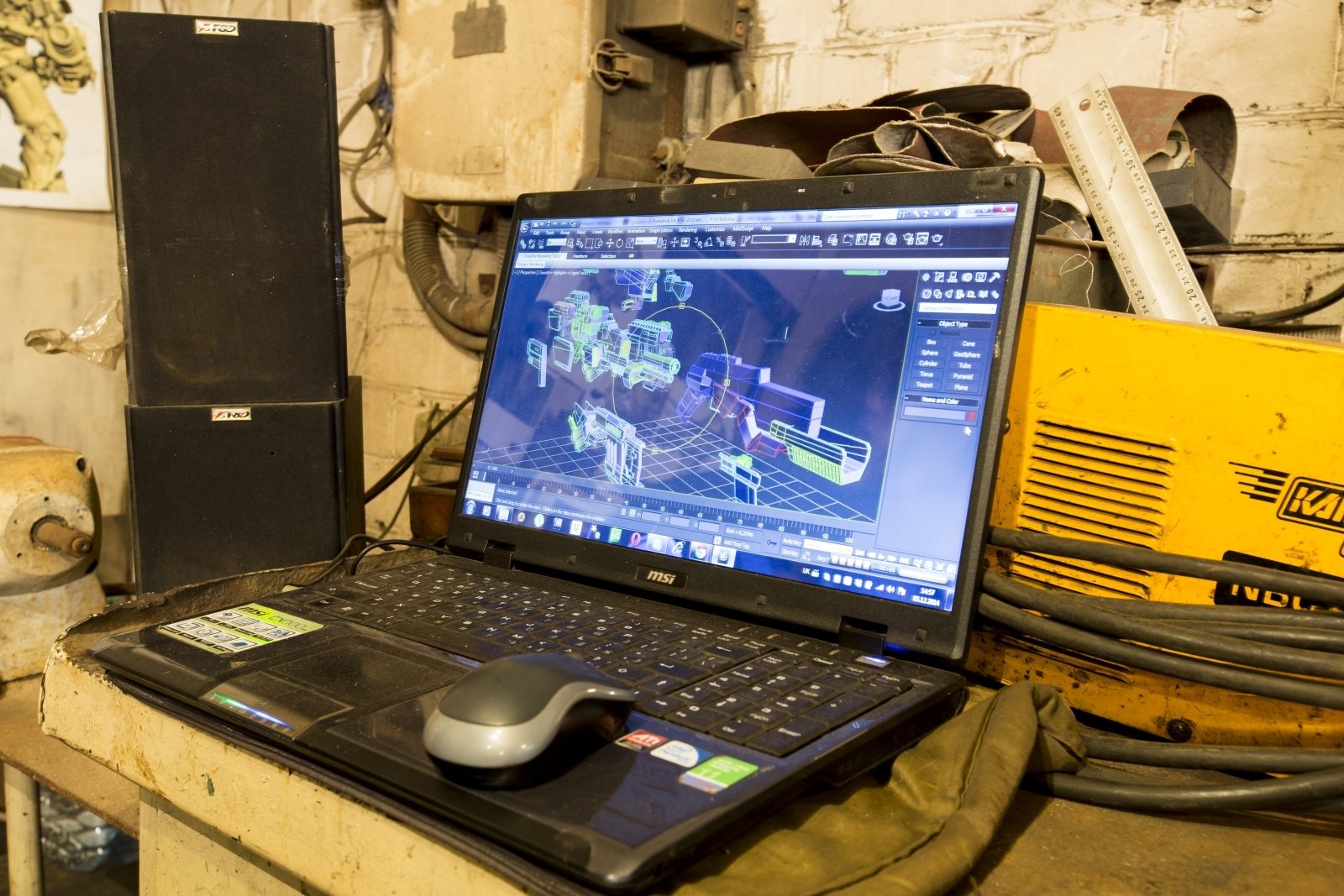
In a company that deals with laser cutting and usually makes housings For welding machines, were very surprised by our order. Especially the number of parts – more than 3000.
Soon the cut elements were taken to the workshop. At this point, we really realized the scale of the work: the details are piled with piles, it is impossible to pass through the workshop. The week went only for sorting and marking, it was terrible to imagine how long it would take to assemble.
How we collected the robot
We divided the assembly work into blocks: each part of the robot was collected separately. In this case, one part could consist of 20-30 docked parts.
The basic element, on which everything is kept, was modeled in 3ds Max, and then collected from pipes. The construction had to be dismantled, so we bought strong pipes for the frame, and the rest of the blocks were hinged.
The laser cut out only the contours of the parts, so all the folds and volume had to be created manually. We transferred the dotted lines of the Peparura folds to the iron parts, and then passed through these marks by the Bulgarian, so that the metal became more pliable. Marking was a very laborious process, it took a third of all time.
At the stage of assembly, we burned 2 laptops and 2 phones. The technique did not cope with the abundance of metallic dust in the air, and it was impossible to work without visualization.
We separately assembled the platform of the robot, its legs, body, arms and gun. Each of these elements, too, understands – for example, you can separate the head from the trunk, and hands to disassemble into several parts. This allows, if necessary, to reach the electronics in any module.
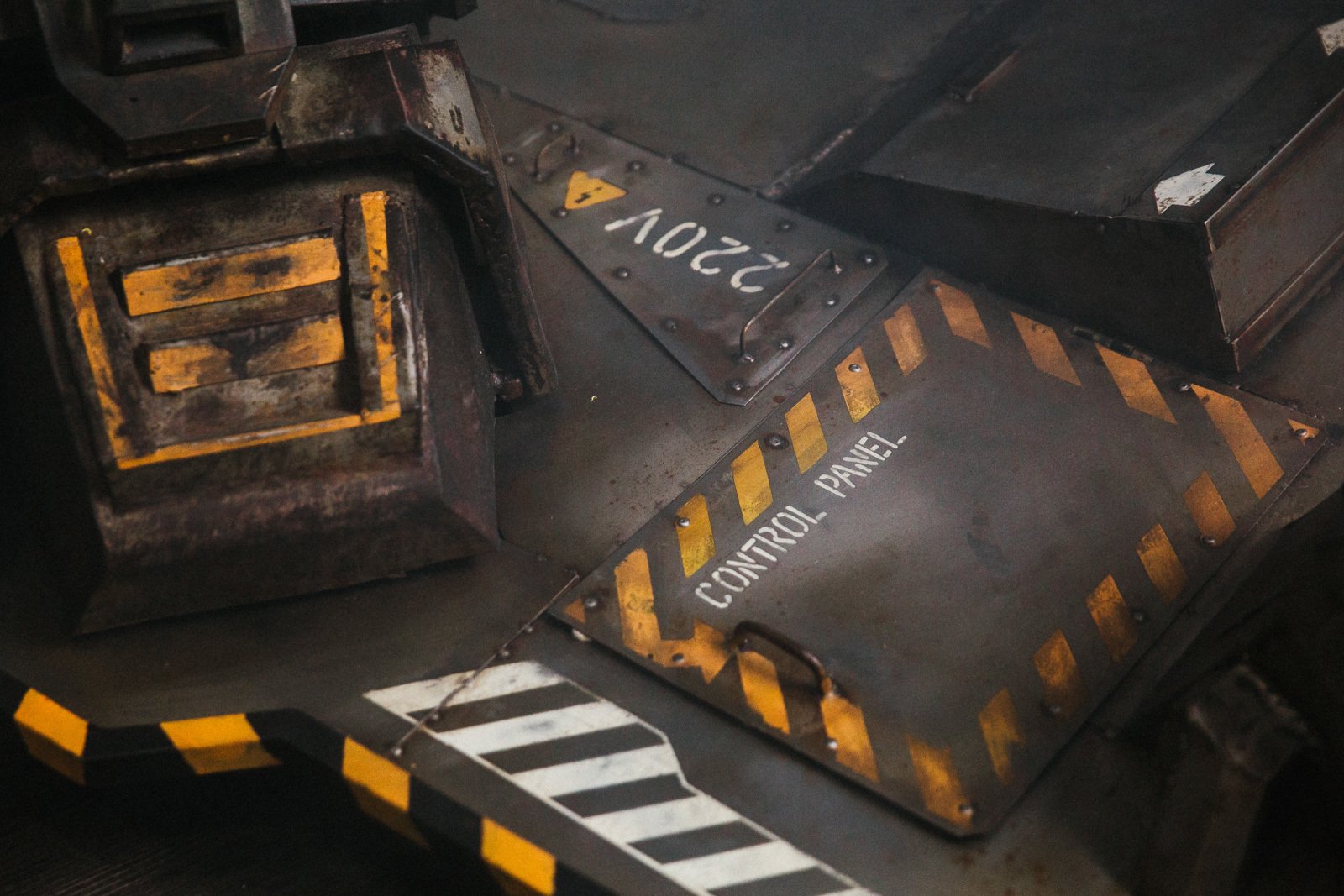
] 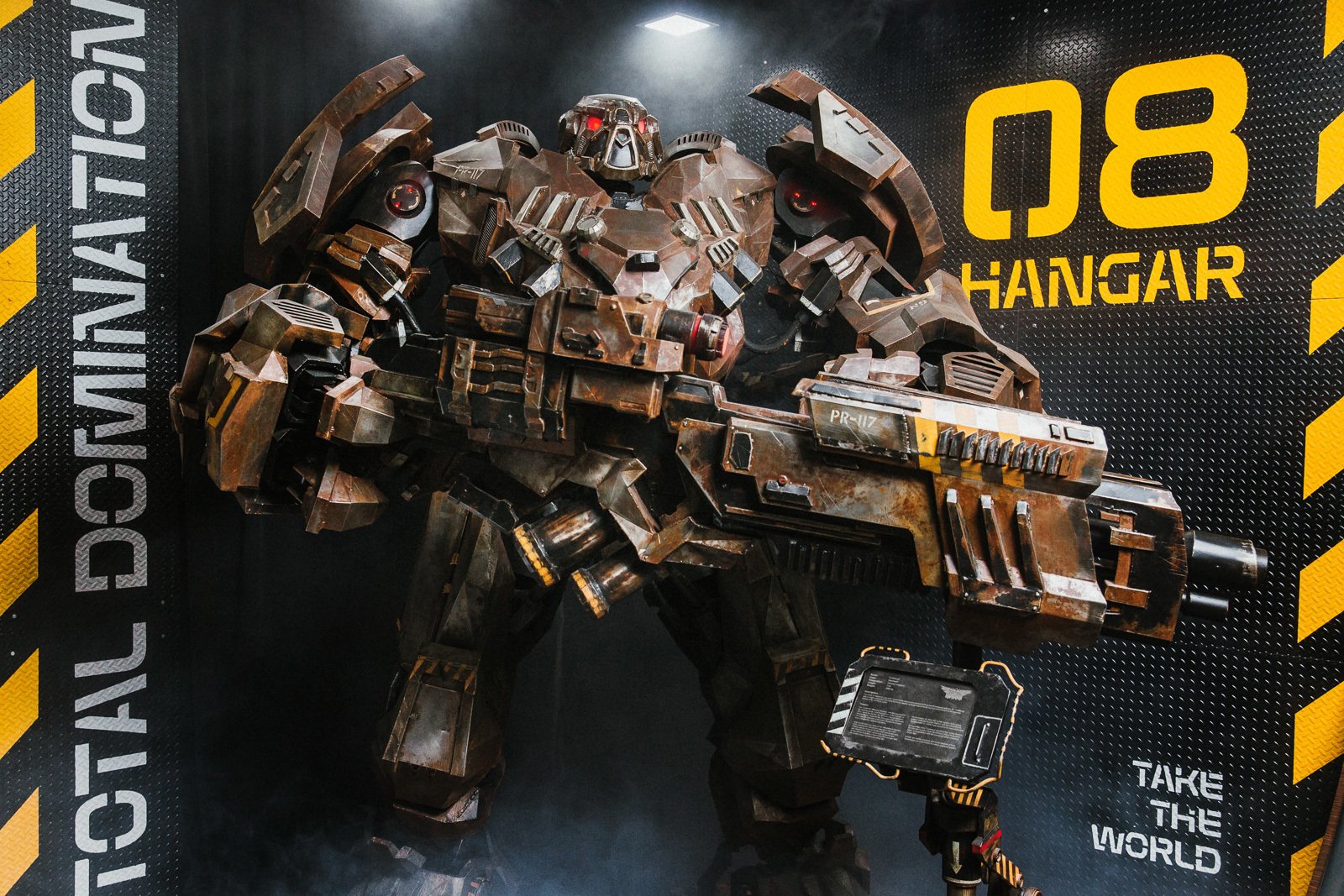
For each block, we defined the skeleton part and first bent it, and then attached others that helped shape the shape. All the blocks were assembled at the welding tackle first, then they were cooked thoroughly, sent to the mop and laid aside.
We started with the robot’s head and immediately realized that everything was working correctly: the head looked exactly like 3D
After the head and frame of the legs a cannon was made and began to create a collapsible body construction. When the trunk and hands were being completed, the electricians took up mobile and luminous elements in the helmet, on the elbows and shoulders.
Suddenly, the gun encountered difficulties. The virtual robot kept it without difficulty, but the real proportions were not allowed to take weapons in hand. Therefore we made an additional support and disguised it under the tablet.
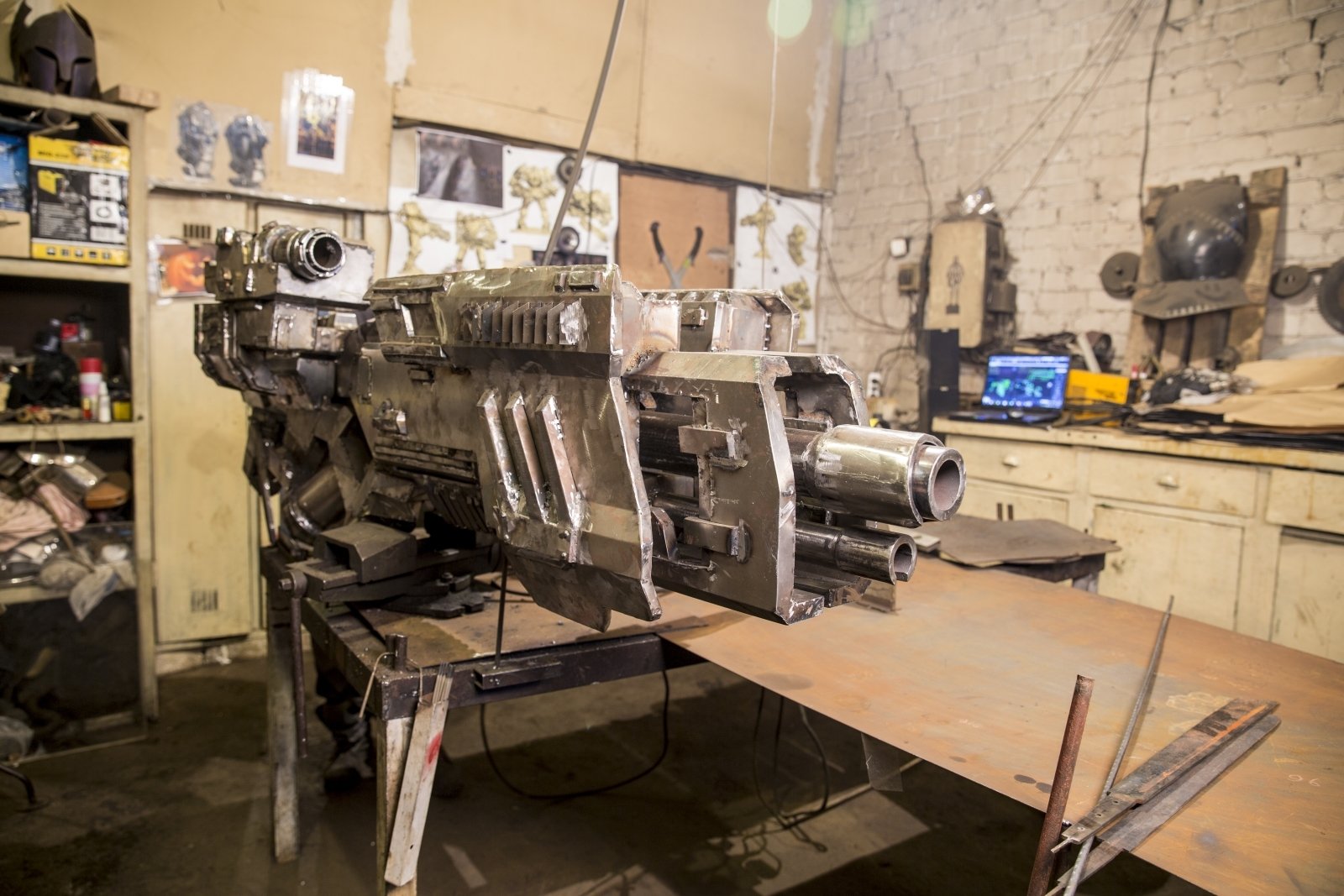
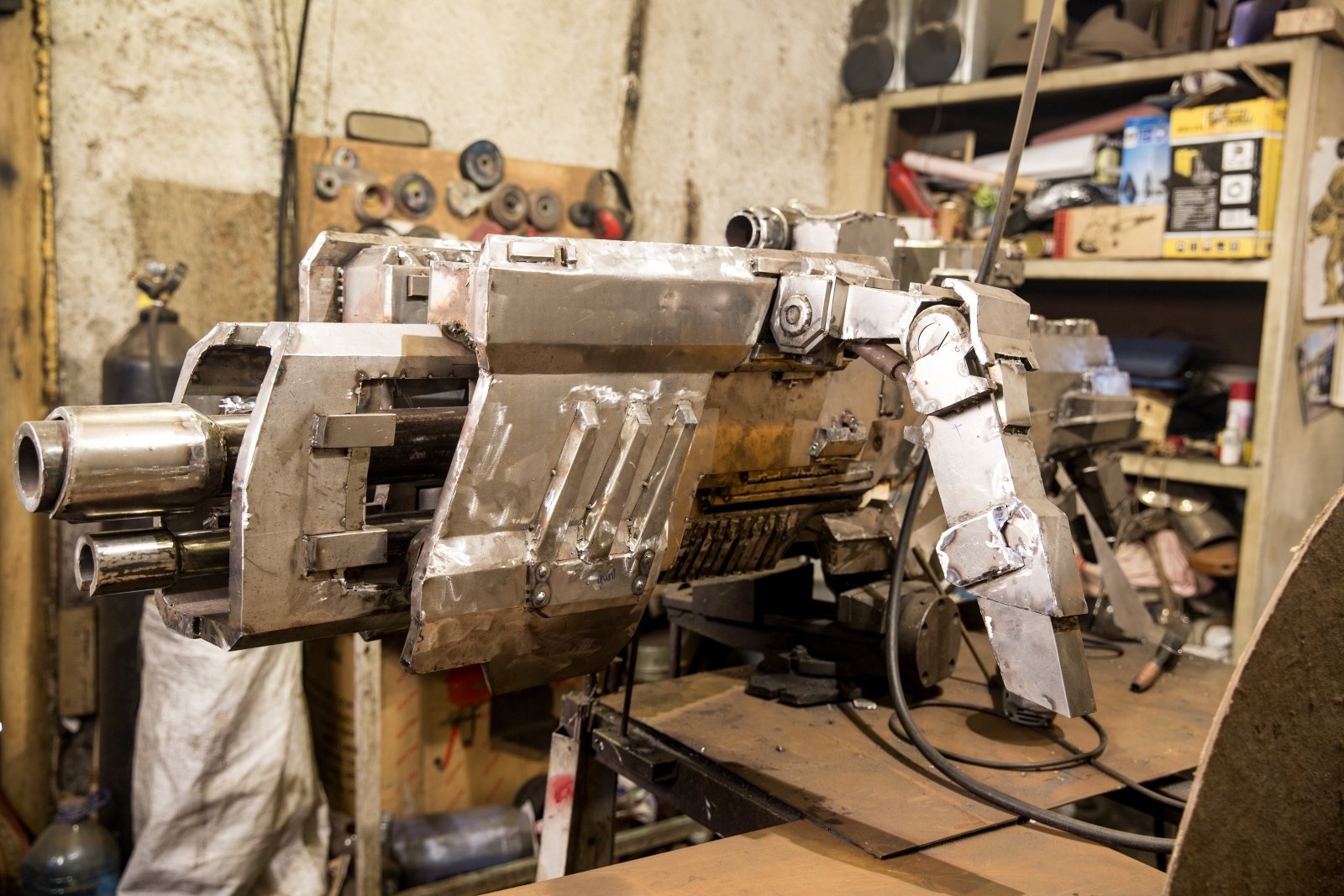
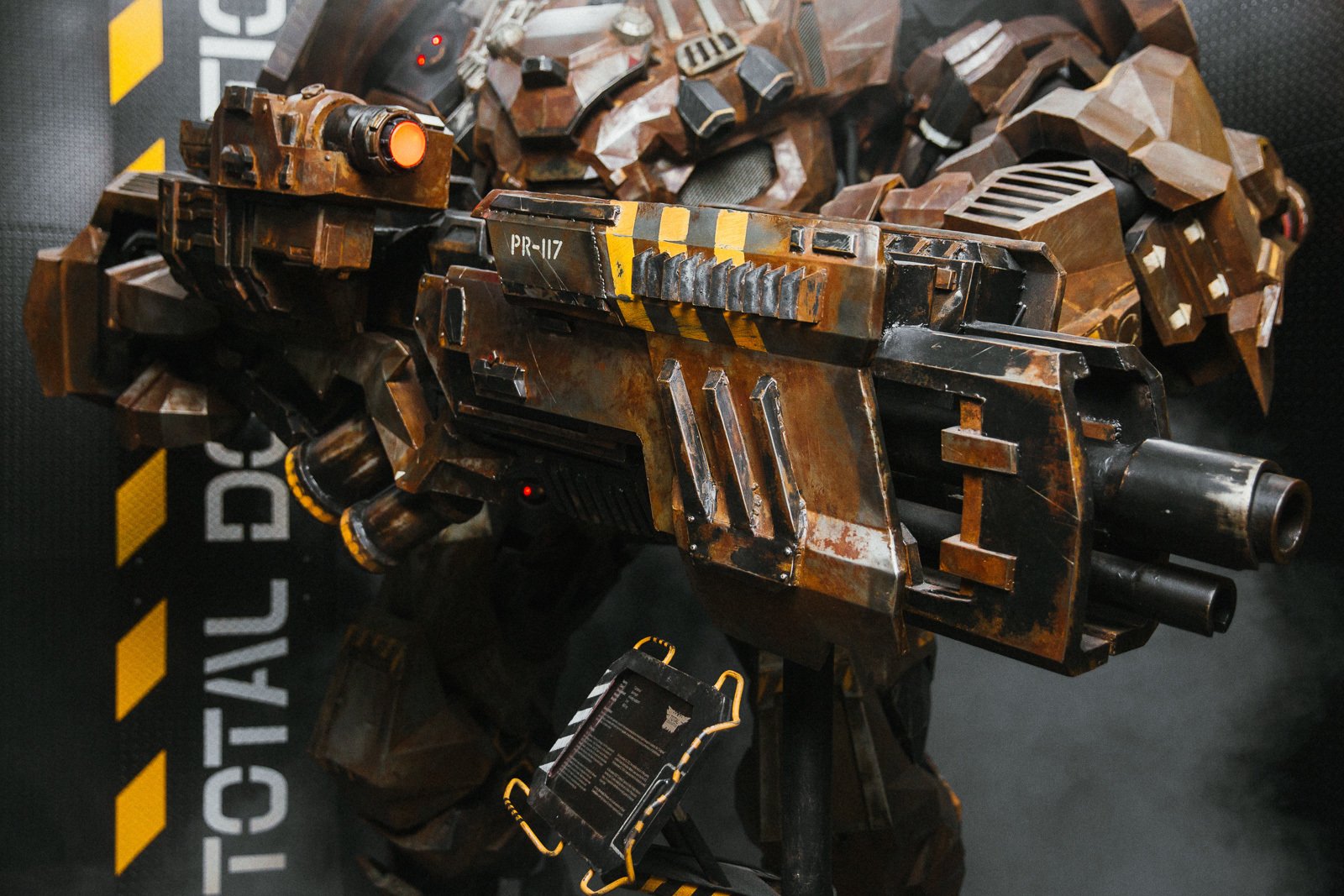
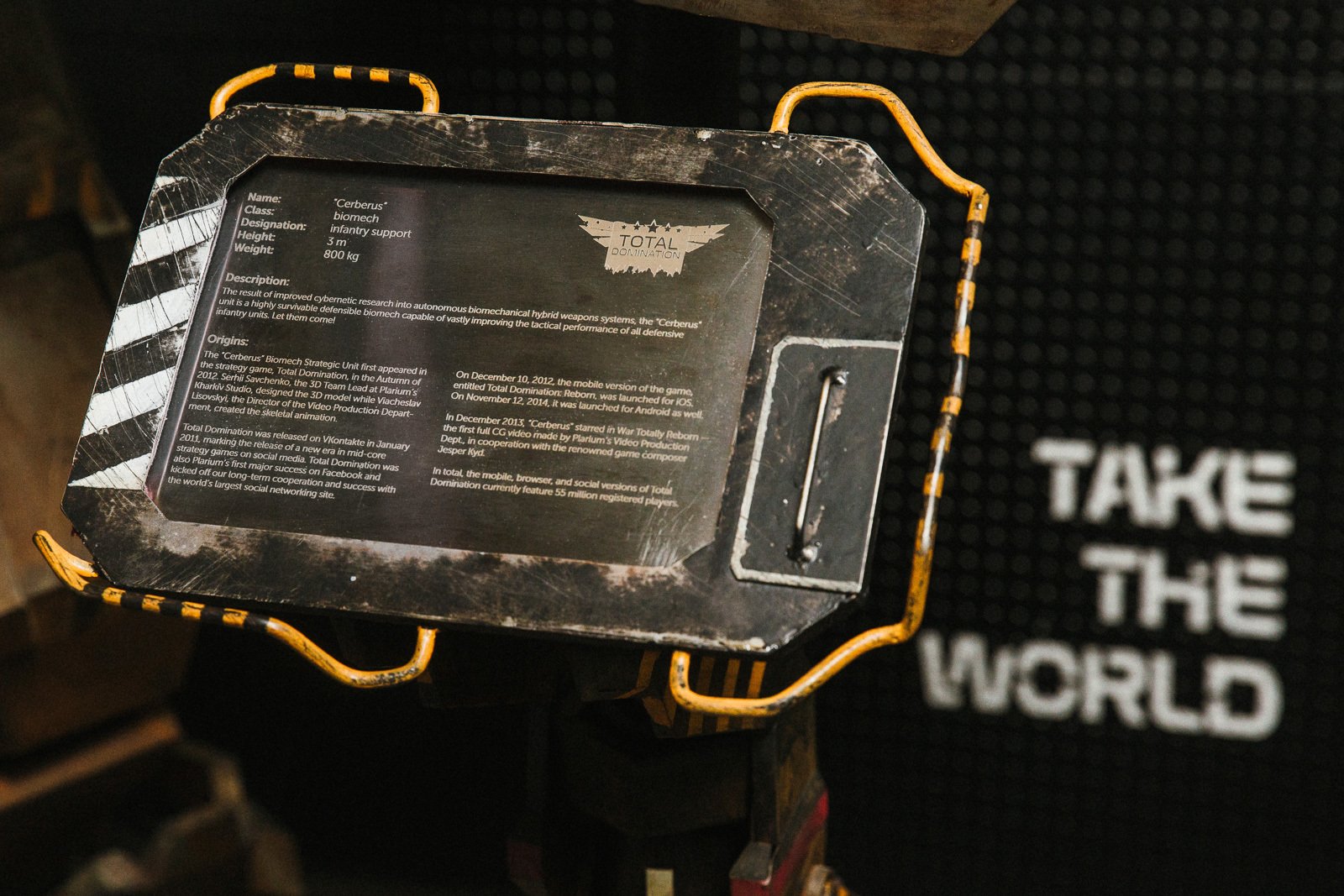
How we revived the robot
The robot can turn his head. A normal motor would not have coped with this weight, so we used one of the most powerful servo drives for robotics, designed for an effort of 35 kilograms.
Of course, it was possible to take a simple microcontroller and sew it into a conventional program that would turn its head to the left and To the right. But I wanted more realism in the movements, so we implemented the rotation mechanism with the help of Arduino. The program includes a nonlinear algorithm and various settings, and also the ability to control the movement of the head and the color of the illumination of the eyes, hands and sight from the smartphone.
The robot is equipped with waterproof Mystery acoustics (the same is used on boats and yachts) With a karaoke system – 2 microphones or an electric guitar can be connected to the “Hammer”.
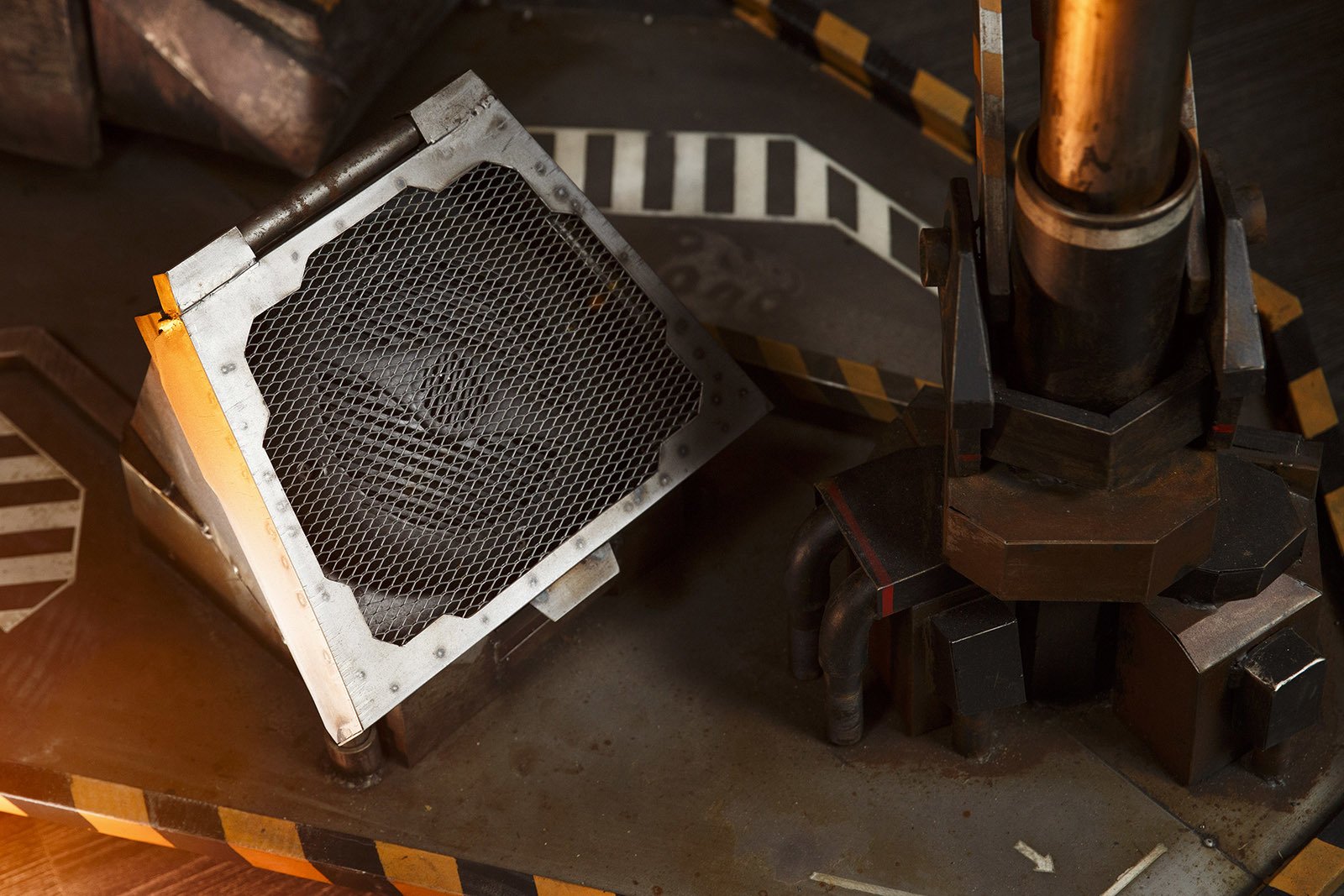
The sight and elbows were filled with hot melt, which dissipates light and hides its source. Previously, we already experimented with the illumination of the Half-Life kit and found out that the material is ideal for such purposes.
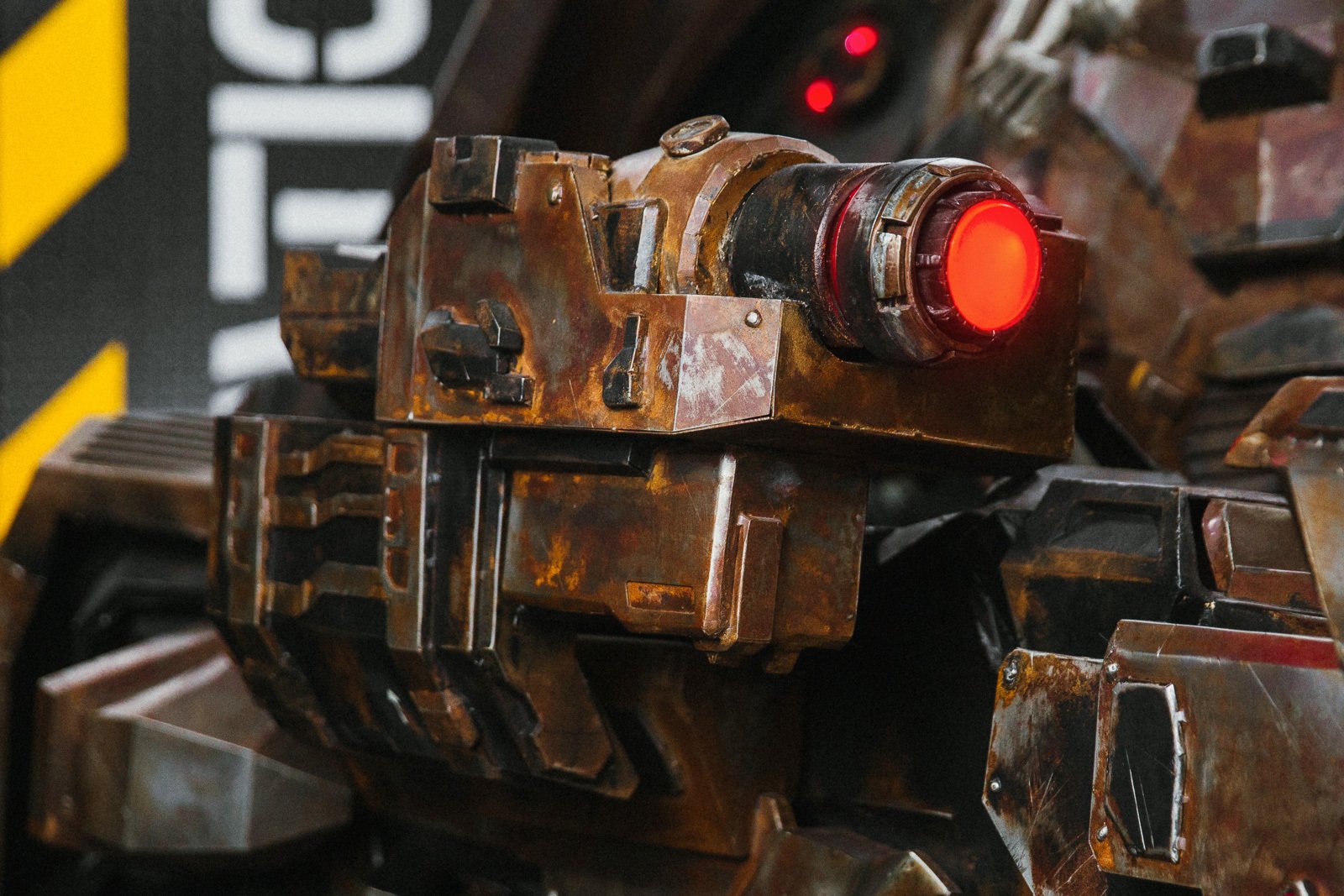
LED strip passes through the module circuit. In cinematics, we saw that the robot uses illumination on the shoulders to dazzle the enemy, so they left a gap through which a beam of light breaks through.
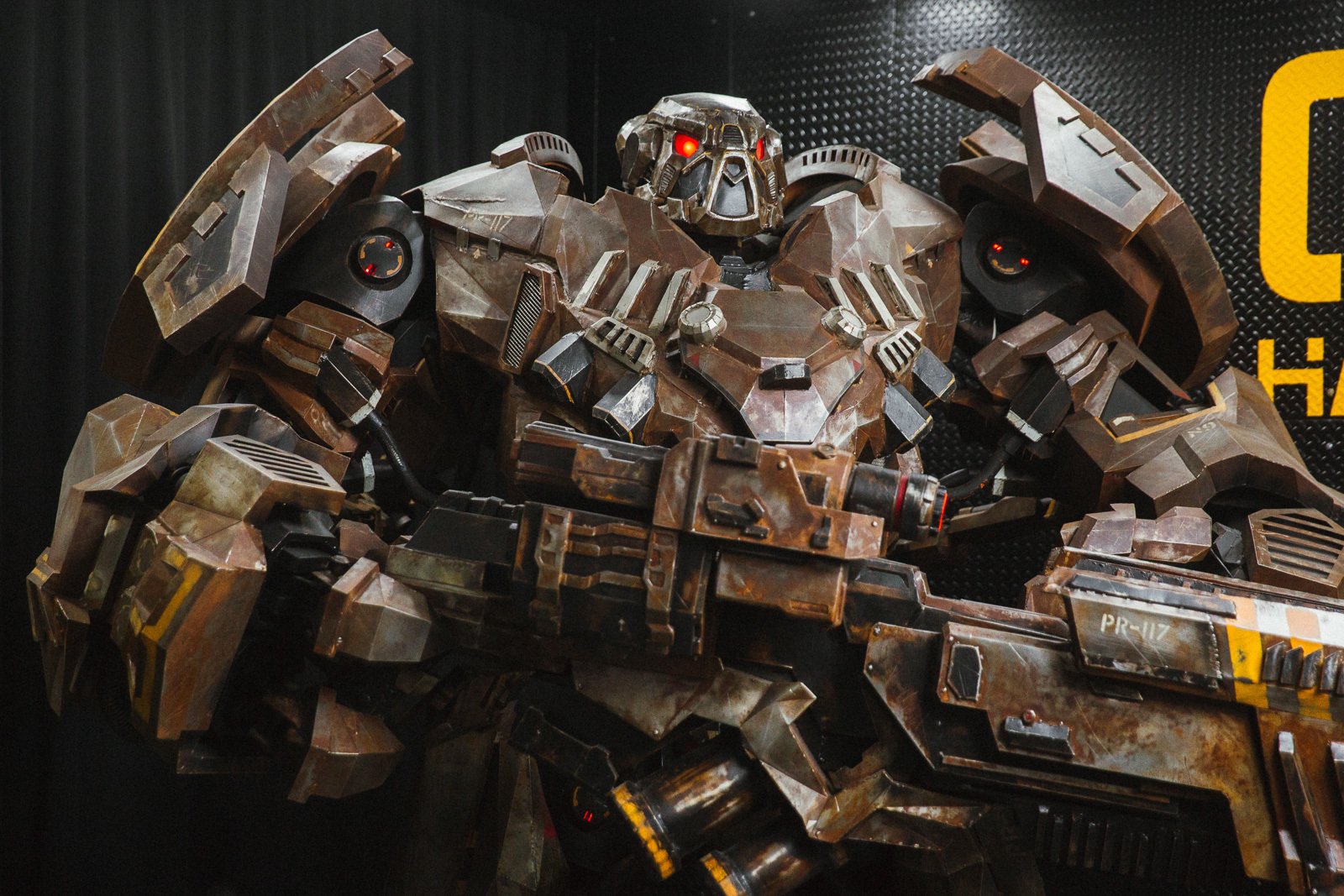
And in the eyes of the “Hammer” the LED tape is closed Filter from plexiglass, wiped closer to the edges. It is this that creates the effect of luminous pupils.
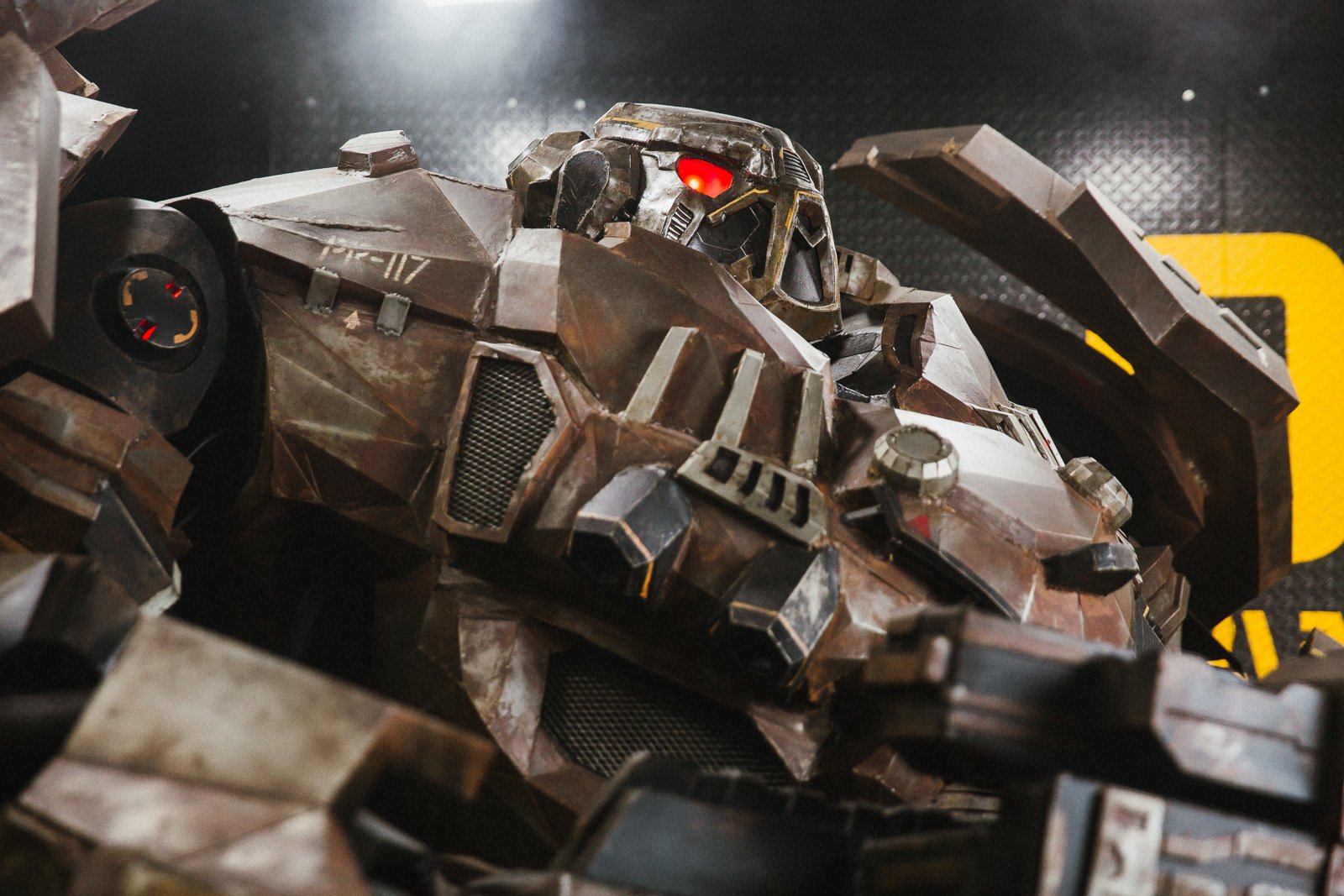
How to bring beauty
The easiest way was to clean the robot, open it and paint it. But we wanted the robot to look like it was just out of the thick of the battle. To do this, it was necessary that the metal rusted evenly and rust did not become corrosive. Therefore, we spent a huge amount of sandpaper, brushes and drill bits, cleaning each centimeter of metal by hand.
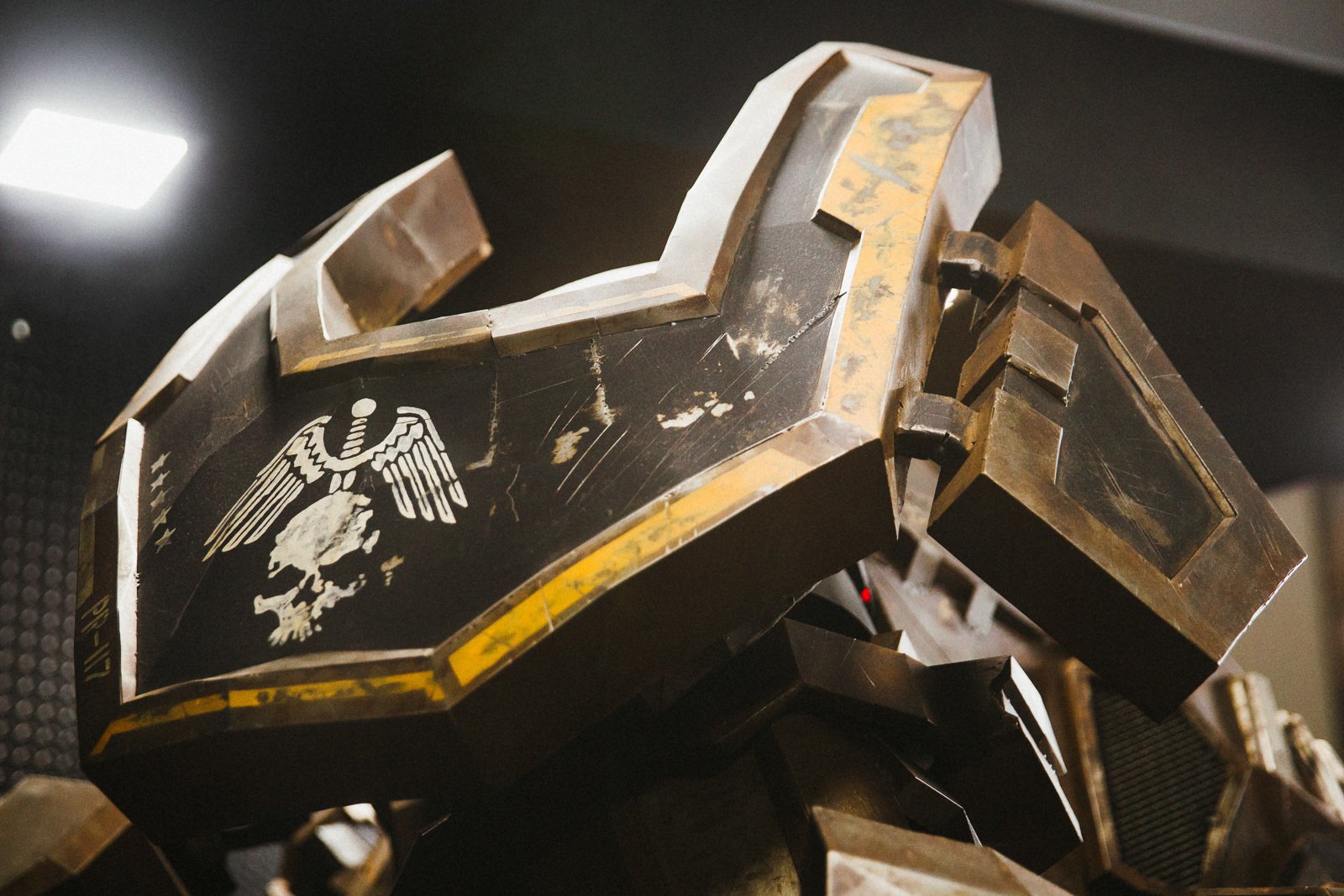
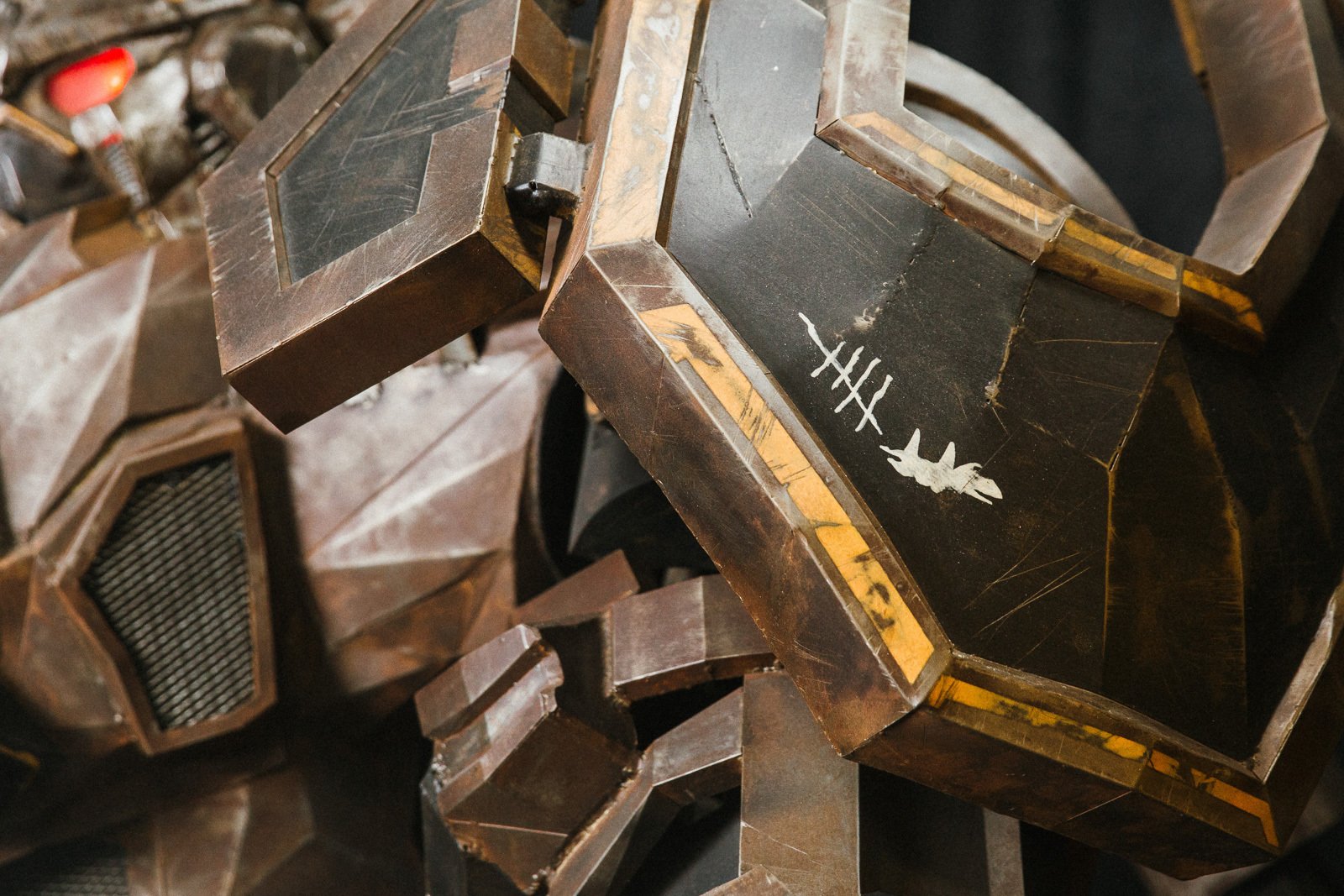
]
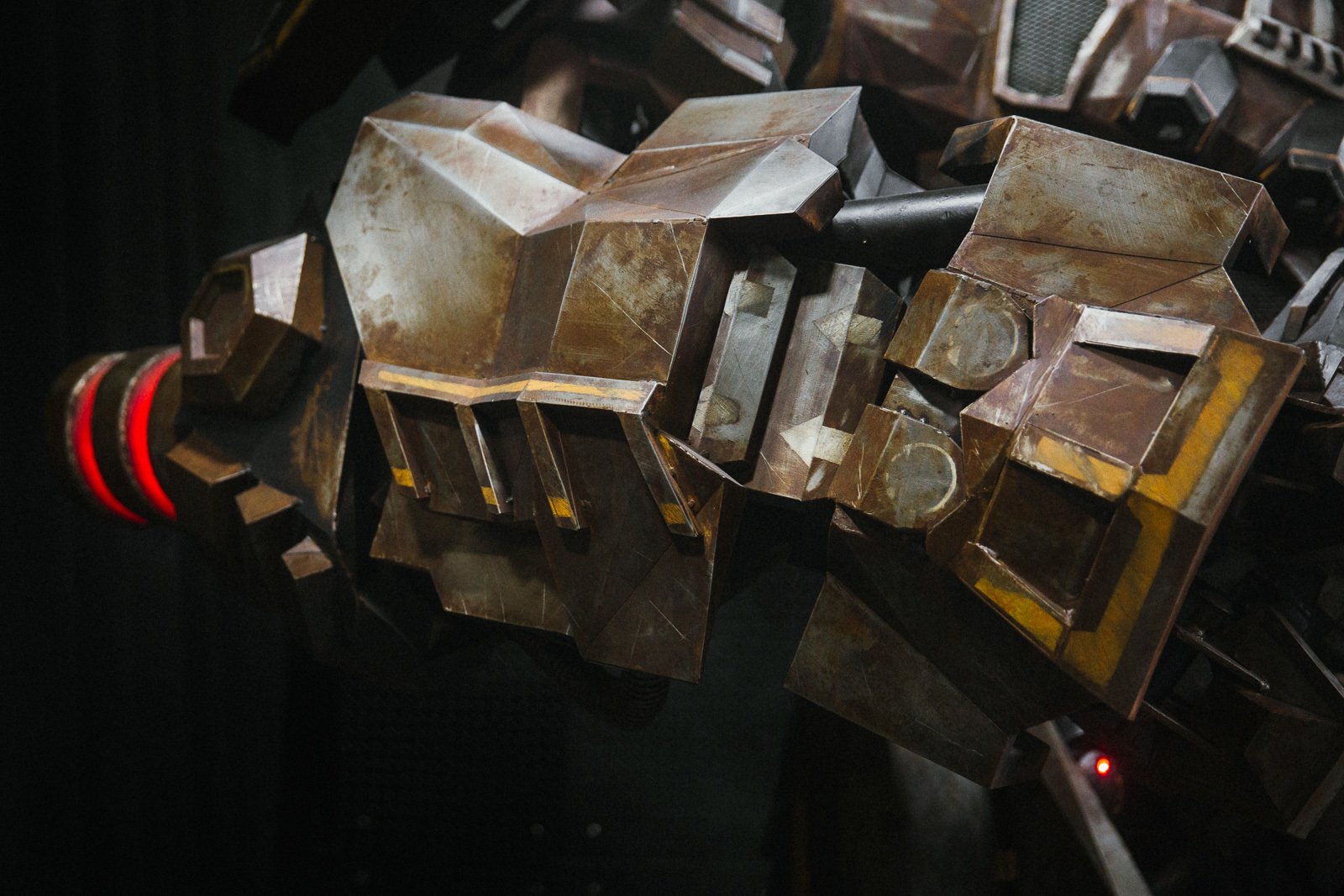
The final stage, assembly, took three days – without sleep and rest. This was the most difficult part of the project. What it cost to insert a gun that weighs more than 200 kilograms is in his hands!
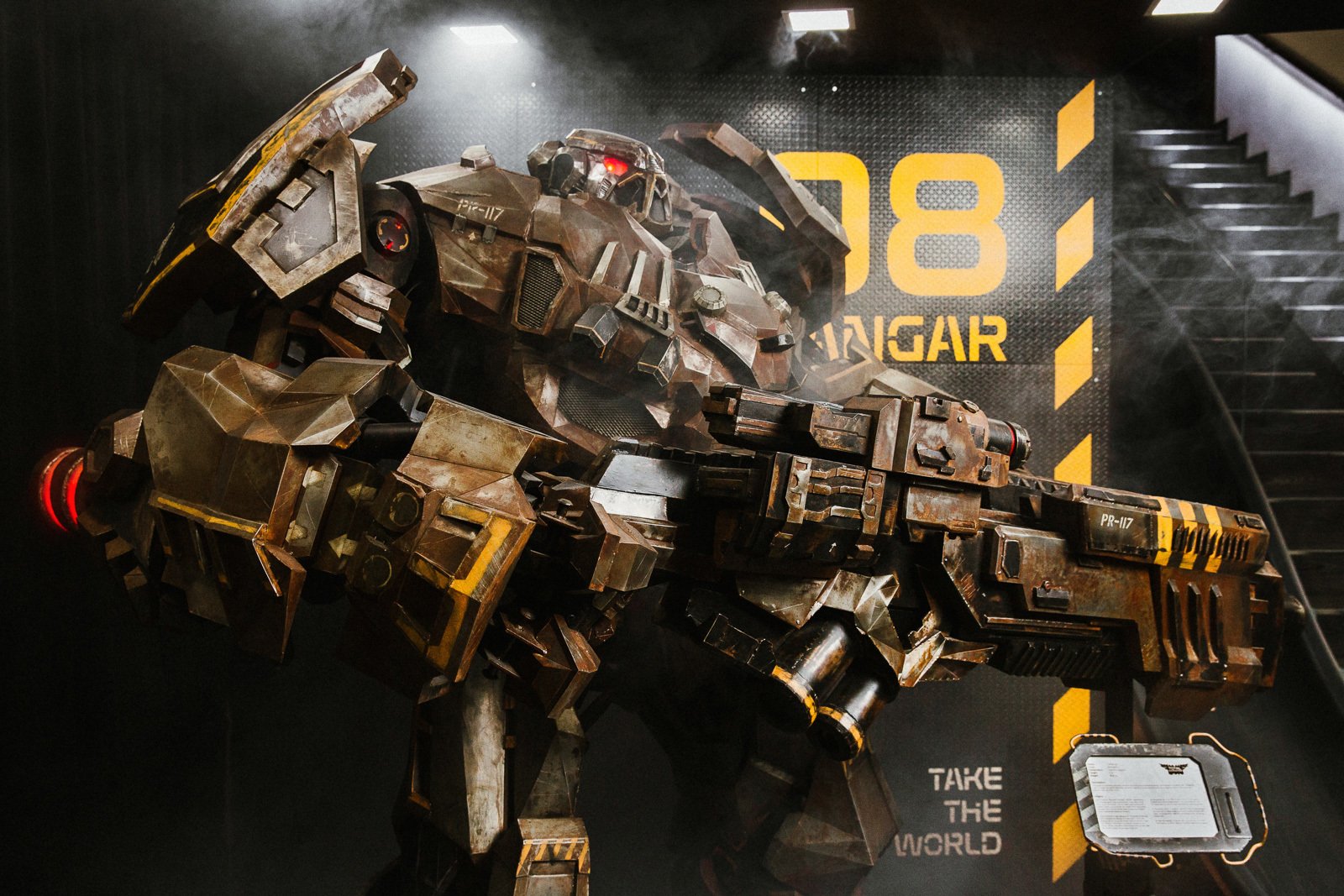
Now the robot “Molot” meets employees and visitors of Plarium Kharkiv at the reception of the 8th floor
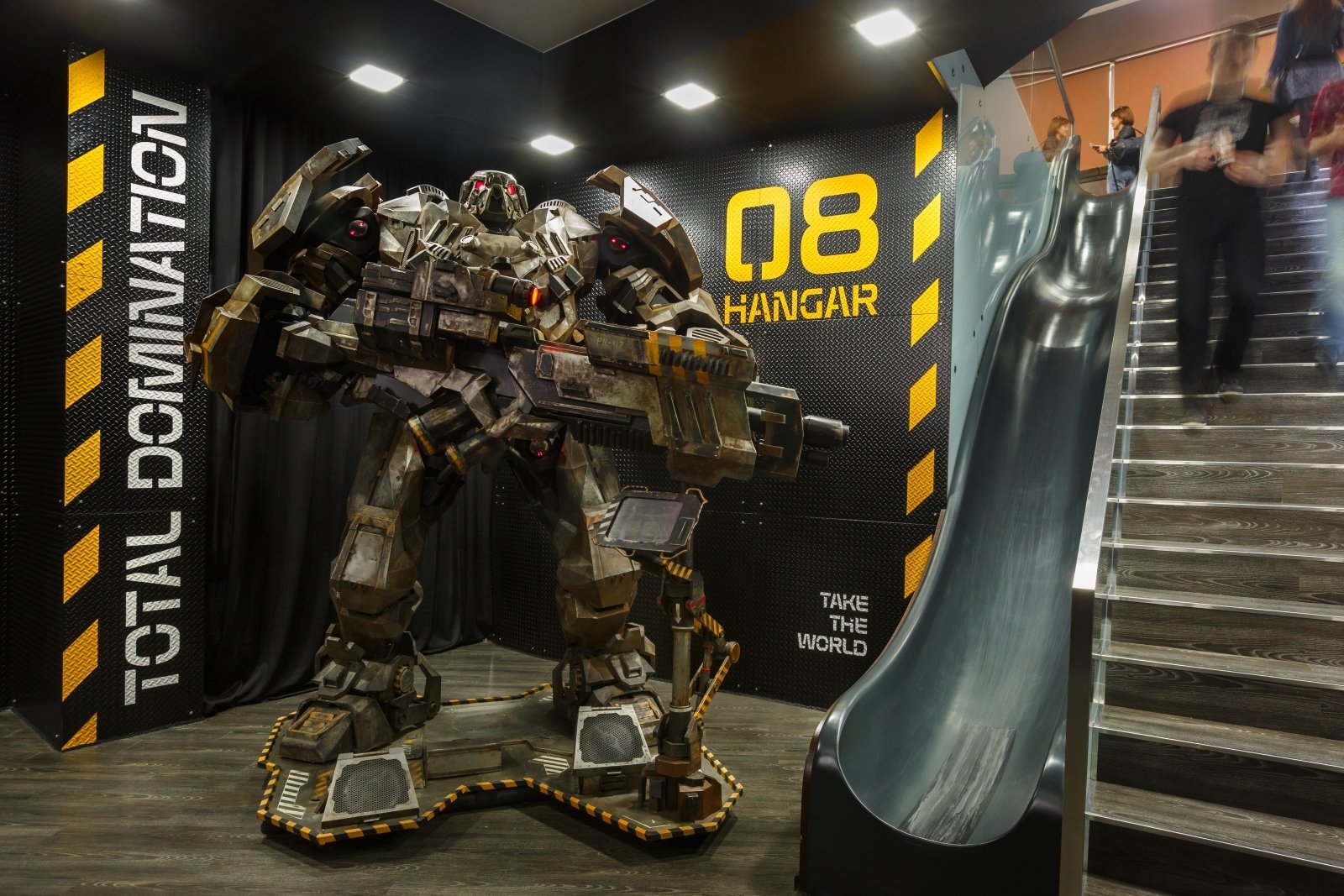
P. S. Later the developers, localizers and sound designers of Plarium taught the robot to speak three languages, but this will be a separate article.








